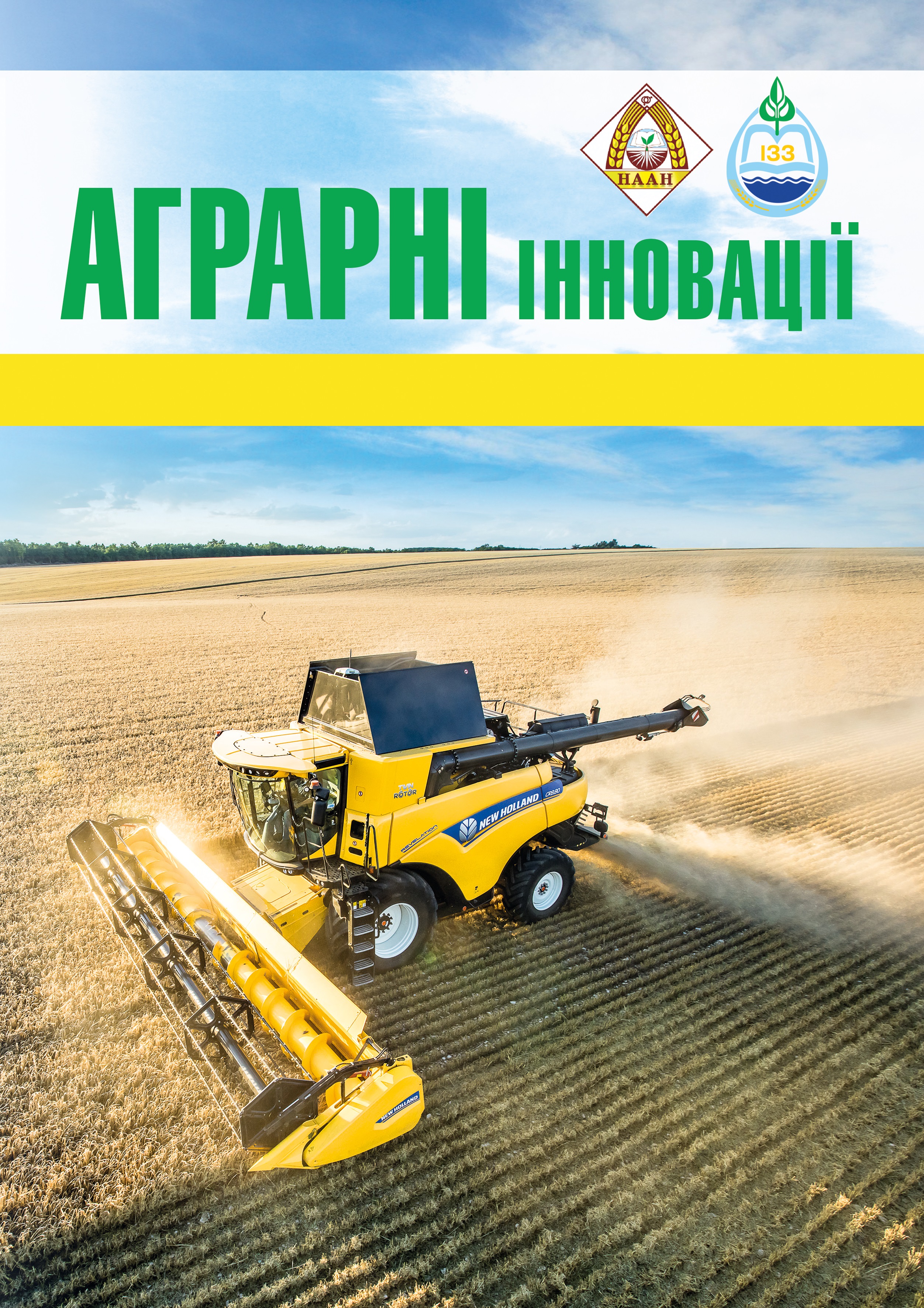Quality of seeds of maize hybrids depending on harvesting humidity and ripening conditions
Abstract
Goal. Establishing patterns of seed quality formation of maize hybrids depending on their harvesting moisture, varietal characteristics and ripening conditions. Methods. Laboratory one to determine quality indicators (humidity, weight of 1000 seeds and dry matter, germination); field one to identify the germination and yield of maize hybrids; mathematically statistical one to calculate the reliability of the data. For experiments the typical cobs were selected at regular intervals (8–10 days), grain moisture was determined immediately, and other quality indicators were determined after drying. The weight of 1000 seeds was determined as the actual and converted to dry matter. Results. Data were obtained that characterize the seed quality of maize hybrids when harvested with a grain moisture content of 18–50%. The relationship between humidity, weight of 1 000 seeds and dry matter content was revealed in the process of ripening, it was found that in case of special hydrothermal conditions (precipitation, high air temperatures) the mass indicators can decrease by 3–15%. In laboratory and field experiments, the germination and productivity of seeds were determined, which depends on the harvest moisture and varietal characteristics of hybrids. Conclusions. In the technology of harvesting seed corn it is necessary to take into account a number of patterns: the amount of dry matter in the seeds reaches a maximum at a humidity of 28–30%; laboratory germination is already high at a humidity of 38–40%, the strength of growth – at a humidity of 28–30%; the seeds become economically viable since harvesting at a humidity of 38–40% and below. If precipitation falls and high air temperature persists, it is not desirable for corn to stand with a humidity of 17–22%. To predict the ripening and harvesting period, the indicators of average daily moisture yield of grain in the range of 0.89–0.94%, 0.67–0.89% and 0.53–0.73% for hybrids of early-ripening, medium-early and medium-ripening groups are proposed.
References
2. Китайова С.С., Понуренко С.Г., Чернобай Л.М., Деркач І.Б. Темп вологовіддачі зерна кукурудзи при достиганні гібридів різних груп стиглості. Селекція і насінництво: Міжвід. тем. наук. зб. Харків, 2013. Вип. 104. С. 66–72.
3. Чистяков С.Н. Изучение динамики влагоотдаче зерном у линий и гибридов кукурузы при его созревании. Научный журнал КубГау. 2012. № 84 (10). С. 1–12.
4. Игнатьев А.С. Интенсивность влагоотдачи зерна при созревании у среднеспелых самоопыленных линий кукурузы. Зерновое хозяйство России. 2011. № 1(13). С. 23–28.
5. Кирпа М.Я., Бондарь Л.М. Мінливість якості насіння кукурудзи залежно від її післязбиральної обробки. Селекція і насінництво: Міжвід. тем. наук. зб. Харків, 2015. Вип. 107. С. 176–182.
6. Стюрко М.О. Особливості формування схожості насіння кукурудзи. Бюл. Ін-ту с.-г. госп. степової зони НААН. Дніпропетровськ, 2012. № 3. С. 117–120.
7. Мустяца С.И. Динамика влажности зерна. Кукуруза и сорго. 1993. № 5. С. 15–17.
8. Кирпа М. Я. Стюрко М. О. Схожість насіння кукурудзи і методи її визначення. Селекція і насінництво: Міжвід. тем. наук. зб. Харків, 2012. Вип. 102. С. 135–143.
9. Вовченко Ю. В., Фурсова Г. К. Зерноутворення та насіннєутворення гірчиці. Селекція і насінництво: Міжвід. тем. наук. зб. Харків, 2010. Вип. 98. С. 211–219.
10. Насіння сільськогосподарських культур. Методи визначення якості : ДСТУ 4138-2002 [Чинний від 2004-01-01]. Київ : Дерспоживсдантарт України, 2003. 173 с.
11. Кирпа М.Я. Методологія визначення якості насіння зернових культур. Бюл. Ін-ту с.-г. госп. степової зони НААН. Дніпропетровськ, 2016. № 10. С. 20–25
12. Лебідь Є.М., Циков В.С., Пащенко Ю.М. та ін. Методика проведення польових дослідів з кукурудзою. Дніпропетровськ, 2008. 27 с.
13. Леснікова І.Ю., Харченко Є.М. Основи роботи і вирішення задач сільського господарства в середовищі електронних таблиць EXCEL : навчальний посібник. Дніпропетровськ : Пороги, 2012. 147 с.






